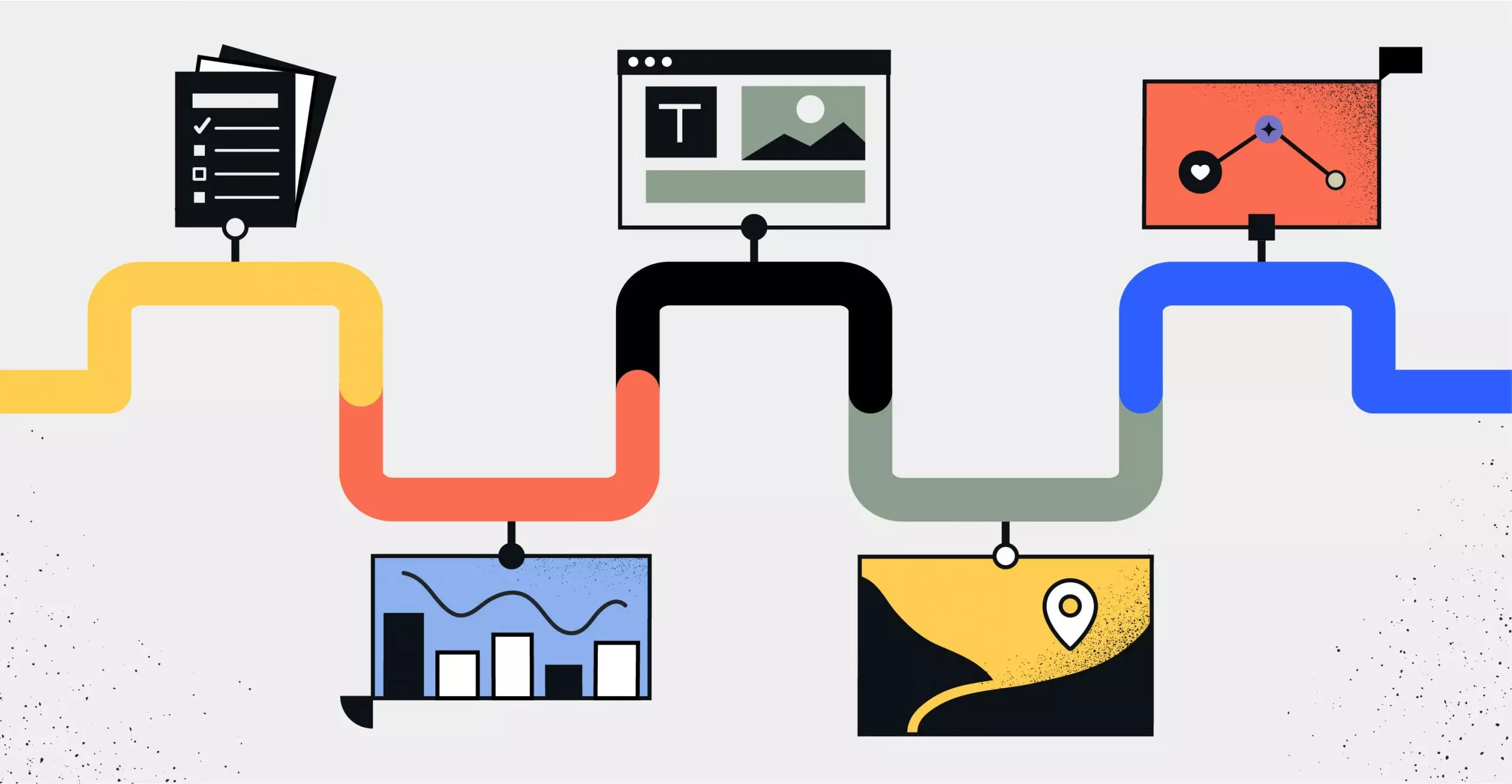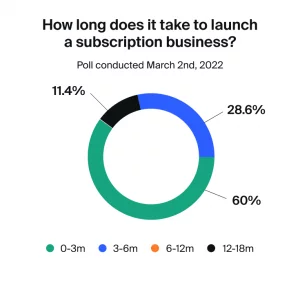
Preparing for your subscription box launch
Recently, we asked our Subscription-first Entrepreneurs Facebook group to share how long it took them to officially launch their subscription businesses. The results definitely skewed towards the speedier side of things, but then again — no two businesses are the same!
Whether you’re a serial entrepreneur or a first-timer preparing for your very first subscription box launch, you need to be realistic and do your research. The good thing is, while you’re in the business planning stage, you’ll have plenty of time to do the due diligence and come up with a timeline that makes sense.
Timelines for starting a subscription business
The time it takes to start a business varies wildly with the type of business you’re starting. Often, the more moving parts to your business, the longer it’s going to take to get started.
This idea of moving parts could influence what business model you decide to go with. A retail business, such as a clothes shop, for example, entails spending time on two things: finding and maintaining a retail space, and creating ongoing marketing campaigns that entice users to take advantage of your evolving offers.
Shifting that business to an ecommerce model cuts out a lot of the costs of physical space, but still requires a lot of marketing spend to keep people coming back with each new season.
On the furthest end of the scale, you can make your business even more efficient with a subscription model, in which you invest money on getting customers to commit for the long-run through a perfect experience catering for their needs at the intervals they want.
Jonny Sadler, one of our Subbly Experts, sums up the benefits pretty well in another thread: Subscriptions allow you to launch and focus on your customer relationship better, and as your customer LTV (long term value) increases, you can be more competitive in your marketing to acquire customers.
There’s definitely a lot to be said about when to integrate a subscription model into your business, whether you’re just getting started or you’ve already gone through the process of a subscription box launch. But we can break it down even further into 3 different models — a retail business, an online business, and a subscription-first business.
Note: none of these timelines include the time it takes to create your business plan.
Retail business – > 1 year
There’s a lot of moving parts to running a retail business, especially when it comes to finding (and paying for) physical space, making it quite a long and expensive process in many cases.
Ecommerce business – 6-12 months
A traditional ecommerce business also has a lot of moving parts, but can be much more affordable as you don’t need to spend as much time worrying about a physical location. That being said, as you’re constantly fighting for new revenue at the beginning with no guarantee of any commitment to the next sale, finding any kind of stability might not come early.
Subscription business – 3 months
While many of the steps will be similar, and you might spend more time at the beginning searching for the niche of customers most likely to buy your products — or finding the products your ideal market would most likely to buy, once you’ve delighted your customers in the beginning, they’re more likely to stay on for the long term, allowing you to build out your offering with the security of stable, recurring income.
Examples of steps to take before your subscription box launch
- Location scouting
- Securing loans
- Applying for business permits, planning permission, and any other legal and licensing issues
- Sourcing manufacturers
- Receiving and approving samples
- Creating marketing strategy
- Build up social following
- Set up store following reception of all inventory
- Build up to grand opening
- Website registration
- Creating branding concept
- Website setup
- Figuring out digital marketing channels to promote on
- Running experiments to determine best target audience
How long it actually takes
When we asked our community how long it actually took them to prepare for the debut of their subscription offering, whether it was for a subscription box launch or a product or service, the vast majority were able to do it in 3 months or less.
The Benefits of Subscription-first
Not only is it faster to launch a subscription-first business, there’s also a host of other benefits too. Through being more aligned with customer needs, they develop stronger relationships with their customers. In addition, subscription-first businesses unlock more data for making better decisions which can lead to a much higher customer lifetime value (LTV). The generally better customer experience they create also helps them create a community around their products, in which customers become ambassadors, promoting the product through positive word of mouth and user-generated content which shows additional social proof. Above all else though, subscription-first businesses tend to enjoy much higher, more predictable revenue over time… which can even help attract investors in the long run!
The main thing that all of these companies had in common was that they adhered to most, if not all, of the subscription-first principles, which you can read more about here. If the prospect of starting a business in as little as 3 months sounds like a good idea, maybe it’s time to get thinking?
Subbly – the purpose built platform for starting and growing subscription businesses

